Do you have a question about the Korg EC350 and is the answer not in the manual?
Details on safe usage locations, AC adapter connection, and preventing interference.
Guidelines for proper handling, cleaning, and keeping the instrument free from debris.
Information on European CE mark standards and FCC regulations for US users.
Notes on specification changes, warranty terms, service contacts, and online resources.
Explanation of Flash Memory preservation and recorder data management.
Highlights key capabilities such as sounds, effects, pedals, recorder, metronome, and touch control.
Details on MIDI capabilities, powerful amplification, audio inputs/outputs, and headphone jacks.
Description of the POWER, PHONES, MASTER VOLUME, and REVERB buttons on the front panel.
Details on CHORUS, TOUCH, TRANSPOSE/FUNCTION, SOUND BANK, and other front panel buttons.
Explanation of MIDI, PC/MIDI selector, PC TO HOST, and PEDALS connectors on the rear.
Description of INPUT, OUTPUT, and DC IN connectors on the rear panel.
Steps for opening the keyboard cover, raising the music stand, and connecting headphones.
Instructions for turning the instrument on/off and adjusting the master volume.
How to listen to the built-in demo songs and experience the instrument's sound.
Lists of available demo songs categorized by banks and playback methods.
Details on adjusting demo song tempo and important playback considerations.
Guide to selecting and playing individual sounds using the sound selection buttons.
Instructions for selecting and combining two sounds for layered performance.
How to apply and adjust reverb and chorus effects to enhance the sound.
Explanation of the damper, sostenuto, and soft pedals and their effects.
Guide to starting, stopping, and adjusting the metronome volume and tempo.
Methods for setting precise tempo values and selecting time signatures.
How to change the metronome accent to a bell sound.
Adjusting the keyboard's response to playing dynamics (Light, Normal, Heavy).
Changing the overall pitch of the instrument and making fine tuning adjustments.
Choosing between Equal, Kirnberger, and Werckmeister temperaments for historical accuracy.
Procedure to reset all user-configurable parameters to their default values.
Step-by-step guide to recording audio performances on the EC350.
Instructions for recording two sounds simultaneously in Layer mode.
How to perform second-pass recording (overdubbing) and play back recorded performances.
Procedures for erasing recorded data and checking remaining memory capacity.
Method to view the amount of memory used for recordings on each track.
How to connect other instruments, mixers, or audio players to the INPUT jacks.
Guide for connecting the EC350 OUTPUTs to mixers, hi-fi systems, or active monitors.
Instructions on how to turn the internal speakers on or off via headphone jack insertion.
Definition of MIDI, its purpose, and how it enables instrument communication.
Guidance on connecting MIDI keyboards, sound modules, and computers.
Procedure for setting the primary MIDI channel for data transmission and reception.
Using the EC350 as a multitimbral tone generator and setting channel reception modes.
Managing keyboard sound output and selecting sounds via MIDI Program Change messages.
Table listing Program Change numbers corresponding to EC350 sounds.
How Control Change messages are used for pedals, volume, and other adjustments.
Configuring computer connection speed and saving/loading data via MIDI.
Detailed steps for transferring recorder and parameter data to/from external devices.
Safety warnings and the first steps for assembling the piano stand.
Identification of all included parts and installation of the pedal beam adjuster.
Connecting the left leg panel, pedal beam, and securing with bolts.
Fixing the right side panel and the rear panel to the assembled stand structure.
Mounting the power supply and starting the piano attachment process.
Final steps for attaching the piano body to the stand using bolts.
Connecting cables, adjusting pedals, and performing final tightening of screws.
Verifying assembly, checking for loose parts, and procedures for disassembly.
A guide to identify and resolve common issues with the instrument.
Explanation of polyphony, how it affects note limits, and factors that reduce it.
Lists which settings are preserved after powering off and which are reset.
Comprehensive list of the EC350's technical data, including dimensions and power.
Diagrams and tables showing quick access to functions using button and key combinations.
| Brand | Korg |
|---|---|
| Model | EC350 |
| Category | Musical Instrument |
| Language | English |
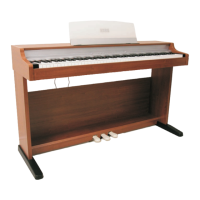


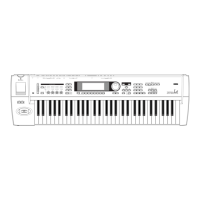
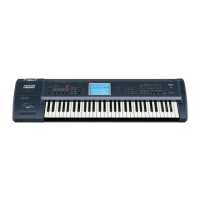
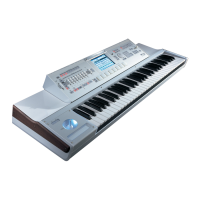
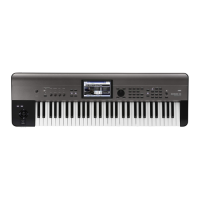

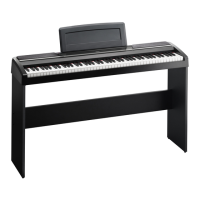
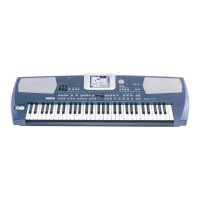
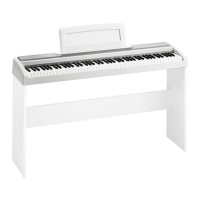
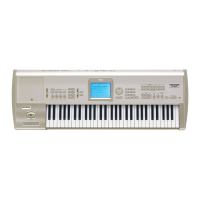
